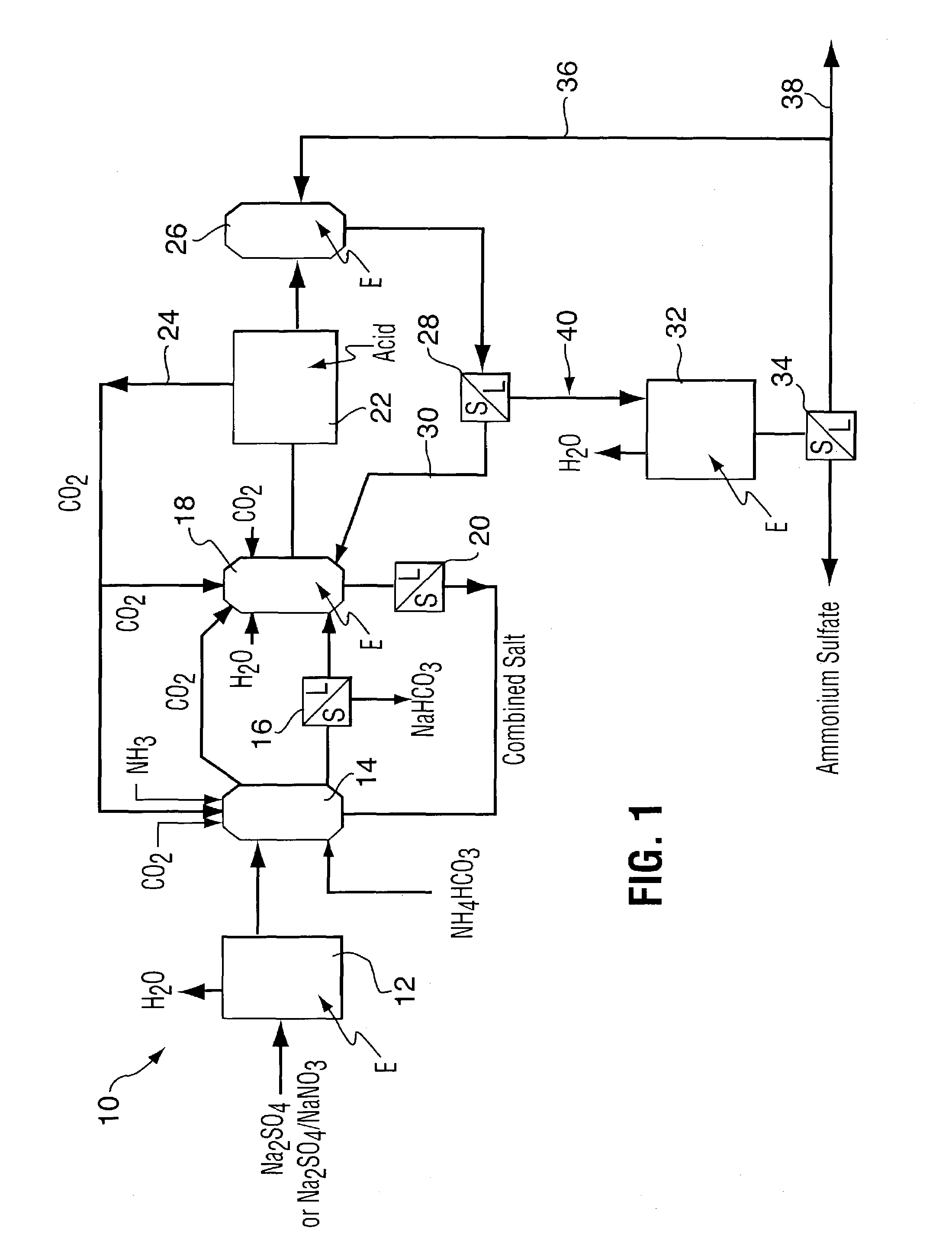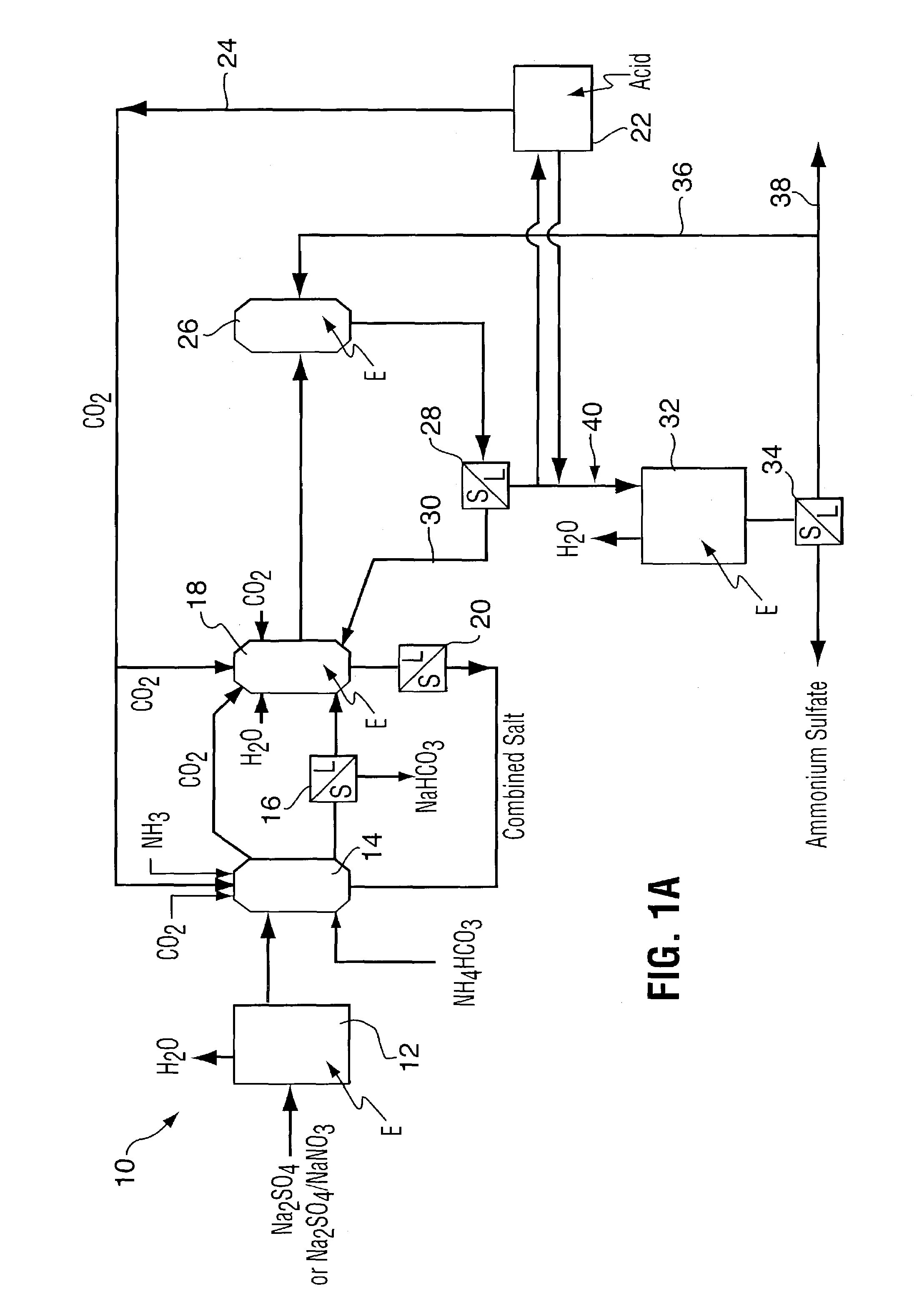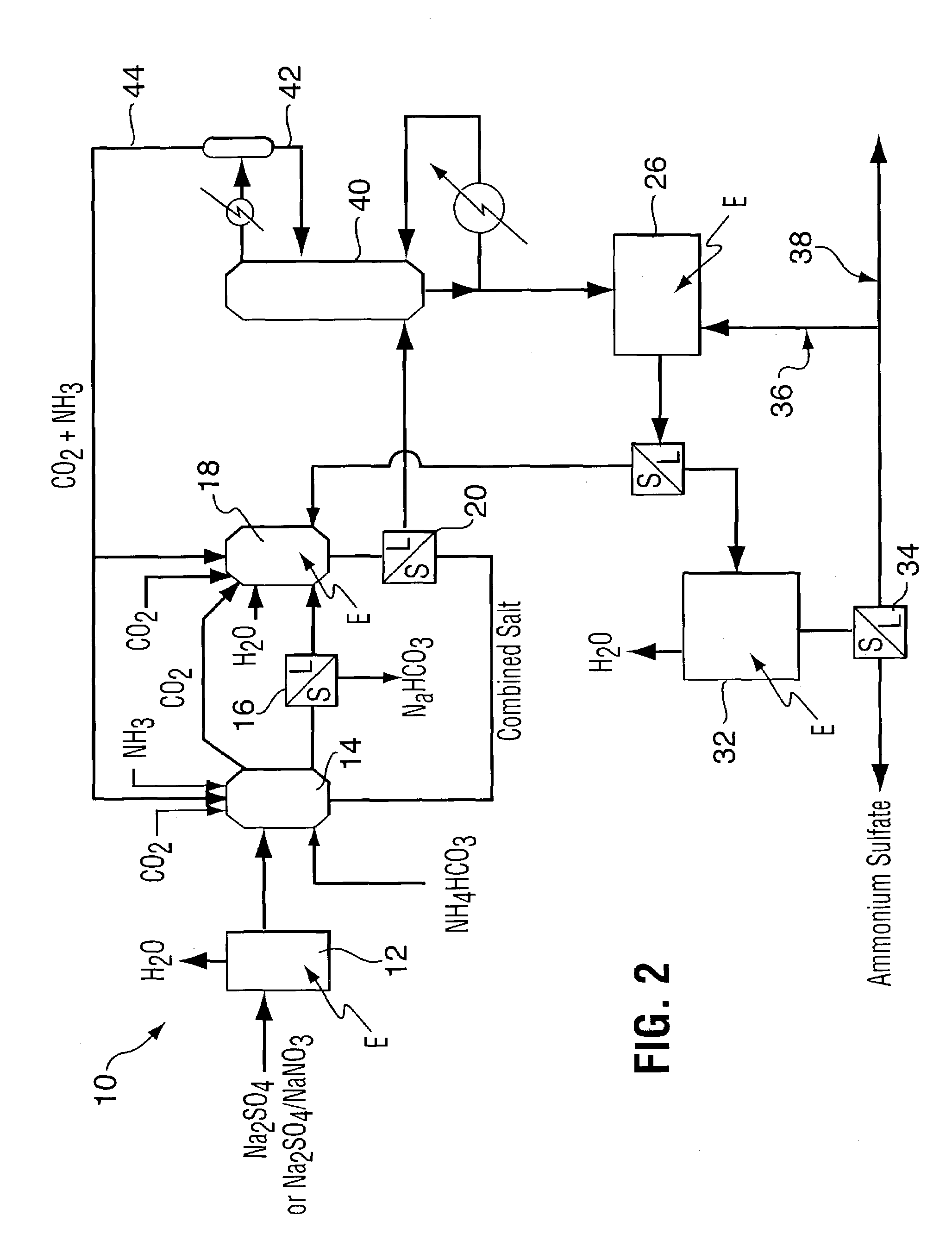Method for recovering purified sodium bicarbonate and ammonium sulfate
a technology of which is applied in the field of recovering purified sodium bicarbonate and ammonium sulfate, can solve the problems of reducing the value of ammonium sulfate, formation of double salt, and limited teaching
- Summary
- Abstract
- Description
- Claims
- Application Information
AI Technical Summary
Benefits of technology
Problems solved by technology
Method used
Image
Examples
example 1
Determination of Optimal Ammonium to Sodium Ratio in the Sodium Bicarbonate Precipitation Step
[0074]The following example illustrates how the complex phase equilibrium chemistry involved in the present invention can be used to determine the optimum ammonium to sodium ratio in the sodium bicarbonate precipitation step. The understanding of the chemistry demonstrated by this example is required for all unit operations within the process.
[0075]The following equilibrium reaction equations represent the process in the sodium bicarbonate precipitation step (using either solid ammonium bicarbonate or carbon dioxide and ammonia gas):
Na2SO4+2NH4HCO32NaHCO3+(NH4)2SO4
Na2SO4+2NH3+2CO2+2H2O2NaHCO3+(NH4)2SO4
[0076]In order to understand the complexity of the phase equilibrium behavior described in this reaction, a graphical representation of the system is required. The reciprocal salt pair quaternary system described in this reaction can be represented on an isothermal ‘space model’. However, th...
case 1
[0103]If a feed has 1 mol of Na+ and an ammonium to sodium ratio of 1.0, then the feed composition is as follows:[0104]Na+=1 mol (23.0 g)[0105]NH4+=1 mol (18.0 g)[0106]HCO3−=1 mol (61.0 g)[0107]SO42−=0.5 mol (48.0 g)
[0108]Using the Janecke and the lever rule, the mass of solid sodium bicarbonate produced is 53.7 g. We know this solid is 100% sodium bicarbonate. Therefore, Na+ and HCO3− conversion to sodium bicarbonate is 63.9%.
case 2
m Once Through Sodium Bicarbonate Production (A / S Molar Ratio=0.912)
[0109]As discussed, point D in FIG. 5 represents the feed that will result in the maximum production of sodium bicarbonate on a once through basis. Point D has Janecke coordinates of (0.477,0.523). If a feed has 1 mol of Na+, then it contains 0.5 mols of SO42−. The moles of NH4+ and HCO3− are equal and can be found from:
0.523=Mols Na+ / (Mols Na++Mols NH4+)
or
0.477=Mols of HCO3− / (Mols of HCO3−+(2×Mols SO42−)
[0110]These give 0.912 moles of NH4+ and HCO3− and an ammonium to sodium molar ratio of 0.912. Therefore, we have a feed with the following composition:[0111]Na+=1 mol (23.0 g)[0112]NH4+=0.912 mol (16.4 g)[0113]HCO3−=0.912 mol (55.6 g)[0114]SO42−=0.5 mol (48.0 g)[0115]Total=143.0 g
[0116]As before, using the Janecke and the lever rule, the mass of solid sodium bicarbonate produced is 55.6 g, sodium conversion is 66.2% and bicarbonate conversion is 72.6%. These are the highest conversions of sodium and bicarbonate pos...
PUM
| Property | Measurement | Unit |
|---|---|---|
| temperature | aaaaa | aaaaa |
| temperature | aaaaa | aaaaa |
| temperature | aaaaa | aaaaa |
Abstract
Description
Claims
Application Information
 Login to View More
Login to View More - R&D
- Intellectual Property
- Life Sciences
- Materials
- Tech Scout
- Unparalleled Data Quality
- Higher Quality Content
- 60% Fewer Hallucinations
Browse by: Latest US Patents, China's latest patents, Technical Efficacy Thesaurus, Application Domain, Technology Topic, Popular Technical Reports.
© 2025 PatSnap. All rights reserved.Legal|Privacy policy|Modern Slavery Act Transparency Statement|Sitemap|About US| Contact US: help@patsnap.com



